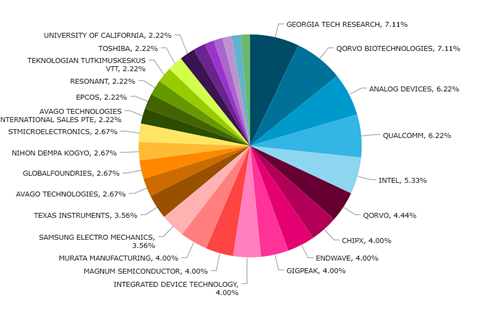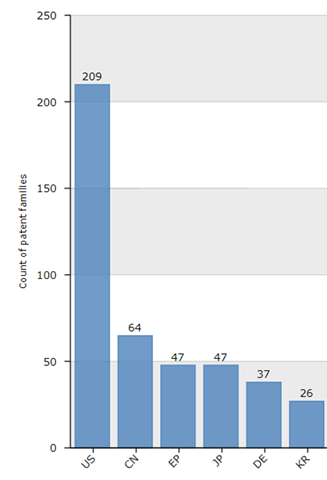Clock on Si: Quartz Days Are Over
In our earlier blog post, we looked at some of the interesting ways of merging audio into display screens namely via an acoustic fingerprint scanner built inside the display and thus use of the entire setup as a speaker. Speech or Audio is therefore a very powerful tool in the sense that mixing audio or speech with other areas of multimedia setup leads to advancement in those spheres and technology. A similar concept exists in the universe of radio frequency processing where RF signals can be analyzed in the acoustic domain to achieve several benefits, including smaller form factors, lower power losses, better processing control and reduced latency.
It would not be an exaggeration to state that the modern sleek smartphones and the spectacular advancement in Telecom industries (3G to 4G and now 5G) have been made possible by the application of acoustic wave processing. A smartphone needs to work on large number of frequency bands, courtesy LTE and various IEEE 802 Wireless standards. Therefore, the phone requires superior capabilities to isolate closely spaced signals (high selectivity) using multiple filters and duplexers. Without acoustic filter technology, it would be impossible to create a large number of filters using traditional filter techniques and simultaneously achieving high selectivity or Q-factor . Not only filters but also an assortment of other components is also produced using acoustic wave principles, like delay lines and oscillators.
Working Principle
In solid materials, alternating mechanical deformation creates acoustic waves that travel at velocities of 3,000 to 12,000 m/s. In acoustic filters, however, the waves are confined to create standing waves with extremely high-quality (High-Q) factors of several thousand. These High-Q resonances are the basis of the frequency selectivity and lower the loss that acoustic filters are generally used to. Along with High-Q, translation of RF or microwave frequencies into acoustic signals of shorter wavelength is also possible to create extremely small filters and resonators for acoustic wave structures.
These devices require Inter-digital Transducers (IDTs) to convert electrical energy into mechanical acoustic waves and then back to electrical energy, enabling signal processing in the acoustic realm.
Acoustic wave devices are of two types: Surface Acoustic waves (SAW) type, where waves travel on the surface of a solid material and Bulk Acoustic Wave (BAW) type, where Acoustic waves travel through the body of a solid material.
SAW vs BAW
SAW filters have a greater tendency of drifting in terms of frequency with respect to temperature than the BAW filters. Hence, BAW filters are preferred for applications with temperatures of wider operating ranges. In recent years, through temperature-compensation mechanisms, more temperature-sensitive SAW filters are manufactured which provide stable frequency operation even over wide operating temperature ranges.
Storing acoustic wave energy within the piezoelectric material has other advantages too. At their higher frequencies, BAW resonators are capable of achieving High-Quality factors that translate into highly selective filters. In case of band pass filters, it means low pass band insertion loss with very sharp filter skirts. This enables a high rejection of signals closely located to a desired pass band.
Achieving lower insertion losses with BAW filters tend to make them more suitable for wireless IoT (add full form) devices that are battery operated since the power consumption of transceivers power is significant for them. This increases the operational life of IoT devices disposed in remote areas. Avago Technologies, Qorvo, TDK (based in Tokyo, Japan), Skywork Solutions, Akoustis Technologies, among others, are some of the major players operating in the Bulk Acoustic Wave (BAW) filters market.
From Filters to Oscillators in BAW
Filters based on acoustic wave technology have been a sphere of research for long time; however, the ability to achieve a quartz-less or crystal-less oscillator based solely on BAW technology has been a relatively modern pursuit. Last month, Texas Instruments launched the world’s first crystal-less wireless Micro-controller Units (MCU) based on BAW resonators. The impact of this is enormous, primarily because quartz, which is a bulky component for a resonator, is currently being used in the chips for clock generation and other time-related control. Its use makes the chip non-monolithic and manufacturing is burdened with an additional integrative step.
Patent Analysis
Lumenci analyzed the domain of BAW resonators constrained with Micro-electro-mechanical (MEMS) type resonators, which is the same type that has been commercialized by the TI launched product. Certain excerpts of the analysis are shared below.
Pie Chart - Patents % by Key Assignee - Technology: MEMS Type Resonators
Geographical Distribution of Patents - Technology: MEMS Resonators
Patent Insights
· Ayazi Farrokh from Georgia Tech is one of the key inventors in this domain, along with Rivas Rio from Qorvo.
· Being a university, Georgia Tech has a sustained and coherent filing trend.
· Recent interest in filing can be seen in two core companies – Qorvo and Texas Instruments.
· Avago, in general, has a big portfolio in the domain of BAW-based filters and duplexer technology but in the case of specific MEMS type BAW resonators, they own a handful of patents and there is not a lot of recent filings as well.
· On careful analysis, it was observed that Chipx, GigPeak and Integrated Device Technology (IDT) have identical filing trends. This indicates some form of acquisition or a patent transfer deal between the triumvirate. It turns out that it is the former case. Chipx was acquired by GigPeak, which itself was acquired by Integrated Device Technology (IDT). Interestingly, IDT was acquired by Renesas Electronics recently.
· Endwave, a defense technology company, utilizes resonators in its radars and other offerings, whereas Qorvo is trying to utilize these in low-power sensors for smart devices and biomedical chips.
· Also, university research is an equally big contributor to this field. Apart from Georgia Tech, University of California is another key university in this technical field. This means that technology transfer from the universities and laboratories is going to be crucial for companies that are showing an increasing interest toward this field.
Patent Filing Trend - Key Assignee - Technology: MEMS Resonators (1999-2018)
Conclusion
SAW- and BAW-based devices have multiple applications, ranging from automotive navigation systems and smartphones to military radar systems. As a domain in technology, it relies on advancement in both hardware (piezoelectric material) and software (modeling solutions) for future progress. As it develops further and the cost decreases, we will see increasing use of BAW devices in many gadgets.




